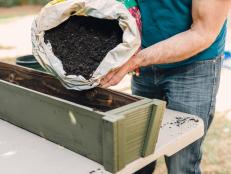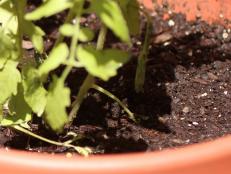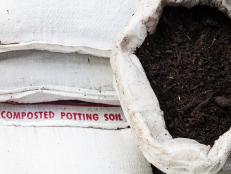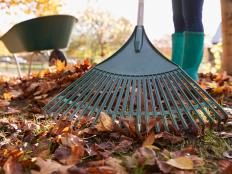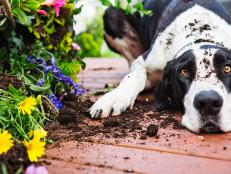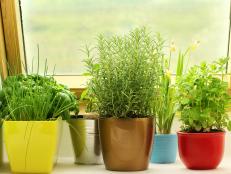Soil Is the Key to Successful Gardening
If there's a secret to successful gardening, it can be summed up in one word: soil. But exactly what kind of soil? Often a seed packet or plant label will tell you "plant in average garden soil," but with 15,000 different types, what constitutes an average soil?
Soil profile
The truth is there's no such thing as average soil. Soil types vary enormously, not only from city to city and state to state, but from one corner of your property to another. Because they can also vary at different depths, dig a hole at least 18 inches deep. This allows you to examine your soil's profile, which is important because within these top few inches – where most plant roots reside – your soil type can change dramatically.
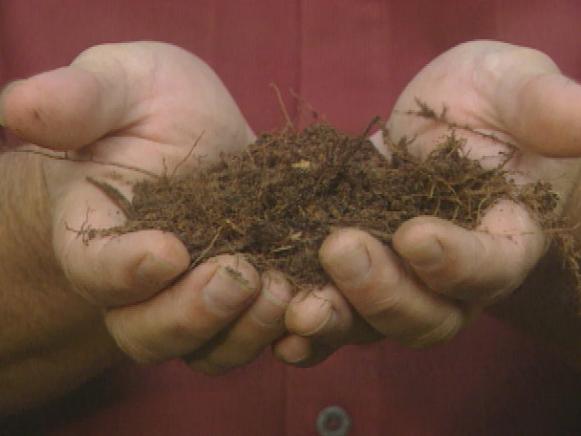
Topsoil. Ideally, within the top six inches or more of the soil surface, there should be a distinct layer called a horizon; this is also known as topsoil. It's full of living organisms, from earthworms to millions of beneficial bacteria and fungi, that contribute to good soil health. That's why it's important to routinely add organic matter to this top layer. Organic matter includes compost, shredded leaves, grass clippings, straw and barnyard manure. Organic matter is what feeds these organisms and keeps them active, and a biologically active soil is a healthy soil.
Subsoil. Beyond the layer of topsoil is the subsoil, which is often made up of several less distinct horizons. The subsoil is important too, though it doesn't contain as much biological life. It plays a role in how well a plant's roots absorb nutrients and how well the soil drains. Avoid compacting this soil and be sure to frequently loosen it with a garden fork. This allows plant roots to move freely and moisture to drain properly. More oxygen will also be able to reach the root zone of the plants, which is vital for survival.

Clay. Finally, at the bottom of the hole there's typically a layer of clay. Clay gets a bad rap, and in many cases deservedly so, but all soils contain some percentage of nutrient-rich clay. However, if you rototill your soil, and there's clay down below, you will create a slick layer of clay that water and roots can't penetrate. What's more, rototilling creates a homogenous blend of soil and that's not what you want either. What you want are those aforementioned layers or horizons.

Soil color
Soil color is also important to pay attention to. Generally speaking, colors that indicate good soil are dark brown, red and tan. Dark brown suggests that the soil has a good percentage of organic matter. Red reflects the oxidized iron content of the soil, while tan indicates a combination of organic matter and iron.
If your soil is nearly black, it can indicate one of two things: a high percentage of organic matter, which again is good, or poor drainage that results in a high percentage of anaerobic bacteria, which is bad. How do you know which is which? There are two simple clues: Few plants grow in anaerobic soil and it also smells really bad.
Soil texture
Soil texture is one of the least understood qualities of soil but important nonetheless. Many gardeners think that soil should be a homogenous blend, a sort of powder-like substance. In fact, the best soils are those with particles of various sizes. Those particles include sand, silt and clay in varying proportions. If they're in roughly equal proportions, then you have what's called loam, which is ideal for nearly anything that grows.
One way to get an idea of your soil's texture is to simply feel it. Place a small sample in the palm of your hand and moisten it slightly. Now rub the mixture with your fingers. Sand feels gritty, silt feels like moist talcum powder and clay feels slippery.
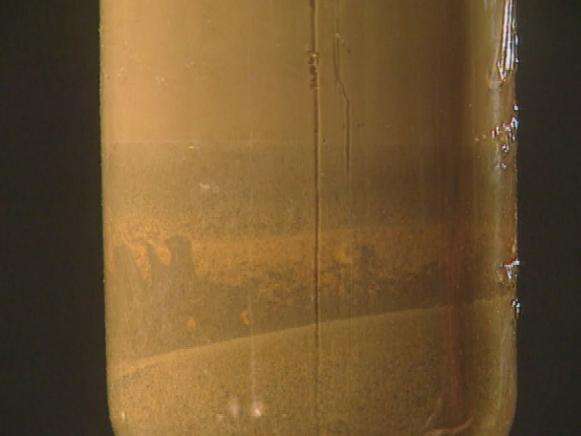
A more accurate test is to place a scoop of dry, pulverized soil in a quart glass jar, fill the jar roughly two-thirds full with water and add a teaspoon of non-sudsing dishwasher detergent. Place the lid on the jar and shake vigorously for about 10 minutes. After a few days, you should clearly see distinct layers of sand at the bottom of the jar, silt in the middle and clay at the top.
Again, if the proportions or percentages of sand, silt and clay are roughly equal, you have good loam. If the percentage of sand or clay is more than 40 percent, you can bring either into balance by adding organic matter. Whether you decide to apply compost, shredded leaves, manure or straw, simply add a two- to three-inch layer on top of the soil or gently work it into the top six inches of soil and let nature do the rest.
By routinely adding organic matter to the soil about twice a year, you can in time create a rich, loamy soil that is anything but average. What's more, you'll find that you can grow healthier plants with little or no fertilizer and that have fewer insect and disease problems.
Rather than spend the majority of your time in the garden tending to plants, instead spend more time tending to your soil. After all, it truly is the secret to successful gardening.






